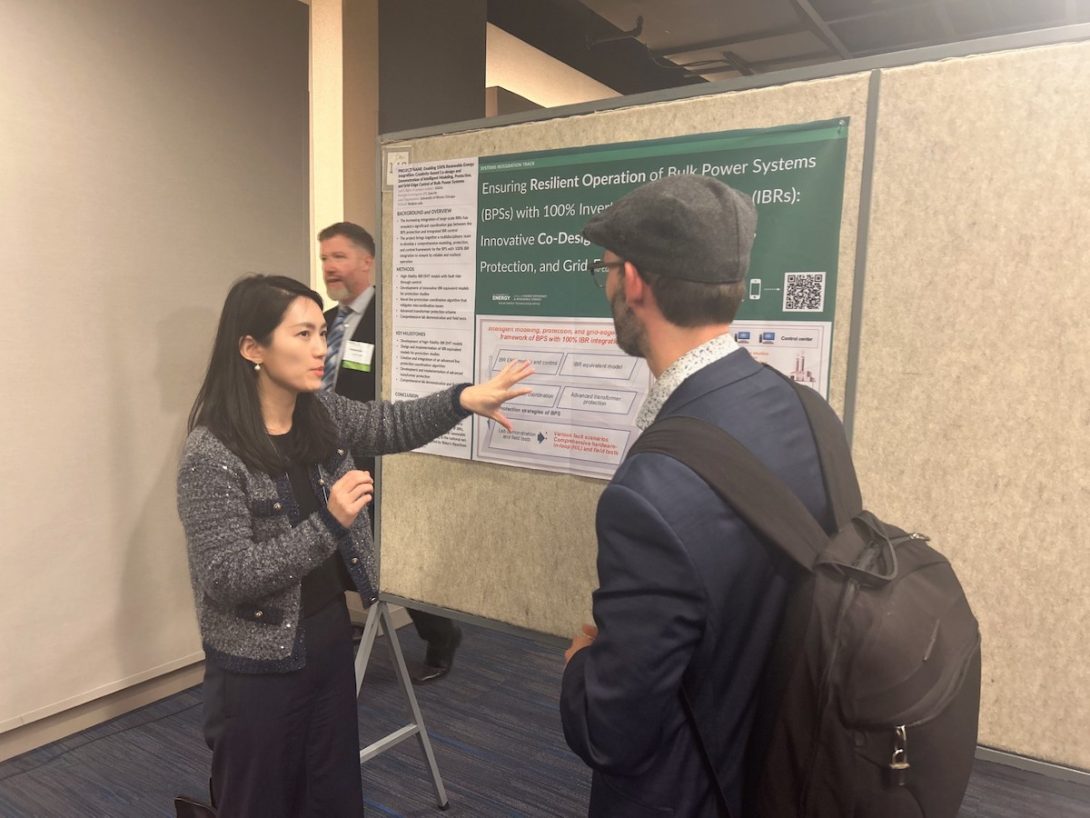He to help upgrade U.S. electrical grid
He to help upgrade U.S. electrical grid

Assistant Professor Lina He is the lead team principal investigator of a $4.1 million U.S. Department of Energy project to develop innovative modeling, protection, and control strategies for next-generation power grids with large-scale renewable energy integration. The project begins in April.
The Department of Energy’s (DOE) Solar and Wind Grid Services and Reliability Demonstration is a funding program that aims to demonstrate the reliable operation of power systems that have up to 100% of their power contribution coming from solar, wind, and battery storage resources. This project is part of a larger effort to upgrade the country’s aging electric grid and create a 100% carbon pollution-free power sector by 2035.
The DOE’s Solar Energy Technologies Office and Wind Energies Technology Office system integration programs, which oversee this grant, are some of the most competitive programs through which to obtain funding.
Existing grid services primarily rely on traditional synchronous generators, ensuring stable grid voltages and frequencies that are crucial for the reliability and resilience of the electric power grid. In contrast, renewables, exhibiting different characteristics and dynamics, employ power electronic inverters to connect with power grids. To facilitate the safe integration of growing solar and wind energy into the grid, power system engineers are actively seeking comprehensive solutions in power system protection to incorporate advanced power electronic technologies.
He attended the DOE’s Grid Services Kickoff Meeting on March 28 in Washington, D.C., which coincides with the start of awards made under the Solar and Wind Grid Services and Reliability Demonstration Funding Program.
He’s grant is for the project, “Enabling 100% Renewable Energy Integration: Creativity-based Co-design and Demonstration of Intelligent Modeling, Protection, and Grid-edge Control of Bulk Power Systems,” or RENEWS. As a principal investigator, she oversees the project, which has a budget of $3 million in federal funding and a $1.1 million cost share. This project stands out among eight awards under the Solar and Wind Grid Services and Reliability Demonstration Funding as the only project from a university that was funded.
“This project aims to develop next-generation inverter-based resource (IBR) modeling, protection, and control schemes for power grid operators, to enable seamless integration of large-scale renewable energy resources with bulk transmission grids,” He said. “This project is a significant step toward a future powered by renewable energy, driven by creative solutions and transformative breakthroughs.”
Collaborators on the project include four world-class manufacturing companies: General Electric, Siemens Industry, Schweitzer Engineering Laboratories, and S&C Electric Company; three major power utilities: ComEd, AES, and Eversource Energy; a top-tier national lab, the National Renewable Energy Laboratory; and two prominent regional transmission organizations, ISO-New England and California ISO. Professor Bing Liu from UIC’s computer science department will contribute expertise in the intelligence technology aspect of the project.
“The project team will be developing innovative technologies to address a pressing industry need, facilitating the high-level penetration of solar and wind energy,” He said. “The team will showcase these technologies in realistic power grids, collaborating with the power companies, vendors, national lab, ISOs, and other partners.
He is the director of the Power Energy Innovation laboratory in the ECE department at UIC. Prior to joining UIC in 2018, He was a senior consultant and project manager with Siemens. He is currently seeking fully funded PhD candidates and postdocs to join her lab, particularly those with a strong background in power systems, power electronics, machine learning, and renewable energy integration.